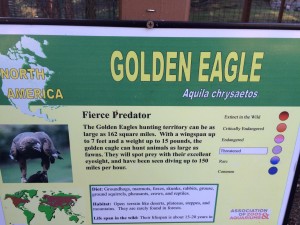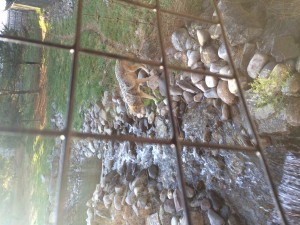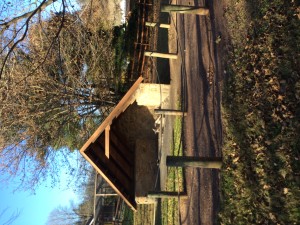Imagine looking forward to when you are greeted by birds nesting in the trees in your front yard, singing their melodies to help you rise on those late April mornings. You can count on the birds to be there year after year, signaling that the long winter is finally over and spring has begun. Then one year the birds simply never appear, or if they do it is just one or two of them opposed to the hundreds you are used to seeing. This was the reality facing bird lovers all across the United States in the 1950s, with no explanation offered. An explanation was finally offered when Rachel Carson published her book, Silent Spring, in 1962. She discovered that DDT sprayed to control sudden tree death was accumulating in the birds and causing extreme population decline. This discovery arrived at a time when the public rarely considered the consequences of their actions on the environment. Through raising the public awareness of the threat of DDT, Rachel Carson transformed the way society perceived nature and pollution, and changed environmentalism forever.
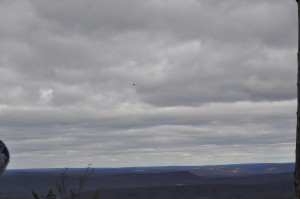
(View from the top of Hawk Mountain)
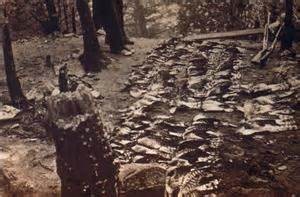
(Picture taken by ornithologist Richard Pough at Hawk Mountain in 1931)
While it did not have the widespread reach of Rachel Carson, a similar watershed moment in changing the way Americans view the environment occurred at Hawk Mountain. When Rosalie Edge bought Hawk Mountain in 1934 she transformed its usage from a spot where gunners would kill hundreds of hawks in a single day, as seen in the above picture, to a sanctuary from birds of prey. Up until this point birds of prey such as the hawk had been demonized by society. They were viewed as killing machines that were decimating the populations of other birds and invertebrates with little value to the ecosystem. Furthermore these birds of prey were known as pests who would kill household pets or smaller farm animals. Through purchasing hawk mountain and turning it into a bird sanctuary, Rosalie Edge helped change the ethos surrounding these birds. Instead of demonizing them people began appreciating them and their raw power and beauty. Scientists began to recognize their value in identifying the health of the environment through studying the accumulation of pollutants in their bodies due to bio-magnification. They also began to realize the value the birds have to any ecosystem through predator control and ecosystem balance. While these changes cannot all be attributed to Rosalie Edge, establishing the first bird sanctuary in the United States helped alter the perception of hawks and especially the hunting of hawks.
In order to transform the public perception of hawks it is necessary for the Hawk Mountain Conservancy to create an appreciation for nature. Thus, the Hawk Mountain Visitor Center Store attempted to portray a version of nature that was idyllic yet informative. There were beautiful photos of hawks lining the walls, interactive maps with their flight patterns, and stuffed birds with information about the specific bird behind it.
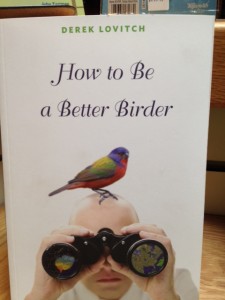
(Book Found in Hawk Mountain Visitor Store)
There were no guns for sale, only binoculars. The entire place was devoted to inspiring a love for nature and a need to protect it, and the history of hunting at Hawk Mountain was presented in a negative light. All of the kids in the store seemed to love the interactive maps, and learn a little about hawk migration when playing them, suggesting that the center has been effectively designed to meet its goal of increasing appreciation and love for the environment.
The presentation of nature as something to be cherished has attracted a lot of like minded individuals from the Lehigh Valley to Hawk Mountain in order to enjoy the graceful flight of the hawks and the beautiful vistas. All of the other individuals up at the northern outlook watching the hawks soar with our class seemed to be incredibly absorbed with what they were doing. While our phones had been confiscated, I expected others to be taking pictures on theres or at the very least looking down at them as people are want to do. Yet, I did not see a single phone during my entire time at the northern lookout. Instead, people were sharing quiet conversations with their peers in between staring intensely through binoculars at all of the hawks. My body screamed to me that it was cold the entire time, but the brisk morning did not seem to bother any of these birders, or at least not bother them enough for them to retreat to a warm fireplace. Instead they simply watched bird after bird fly by. The ability of the people at the northern lookout to appreciate every single bird was incredible to me. While I certainly found the birds interesting and appreciated seeing them soar above me, even when I had the binoculars and was able to observe them in detail I got bored of bird watching after about fifteen minutes and I noticed similar reactions from my classmates. Even though we are all environmentally oriented students, these people had a far greater appreciation for the beauty of nature than any of us seemed to, and I hope to learn from them and begin to take steps in my own life to fully realize how awe-inspiring nature can be.
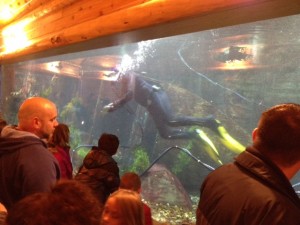
(Diver Dan)
The appreciation for the intrinsic value of nature the individuals on top of the northern lookout had was in stark contrast to the people I saw in Cabela’s. While in Cabela’s, Joey Ritter and I went to a fish feeding where “diver dan” got into the tank to feed the fish and educate customers. Immediately upon entering the tank, Dan went and grabbed the catfish and dragged it to the middle of the tank. Showing no regard for the obvious annoyance of the catfish, Diver Dan proceeded to pull open and continuously tug on its mouth throughout the show. While he was educating the customers about the fish during the show, he was doing it in a way that showed little respect for the fish and taught the audience that it is okay to mishandle and disturb wildlife.
While the Diver Dan show showed little respect for nature, other parts of the store promoted its conservation and the need to spend time in the outdoors. There were beautiful murals of mountains and posters discouraging littering. Yet, I felt uneasy about the nature presented at Cabela’s. I was unsure why I felt uneasy until I realized that all of the signs and constructed landscapes and pictures demonstrating the beauty of nature and promoting respect for nature were doing so without acknowledging that nature has any intrinsic value. Cabela’s promotes conservation and glorifies nature strictly due to the value that it provides to humans. In Cabela’s, nature must be protected so that it can be used for hunting or fishing or camping, not because it has value in its own right. This view of nature did not sit right with me, and I preferred the view of nature that was presented to me at Hawk Mountain.
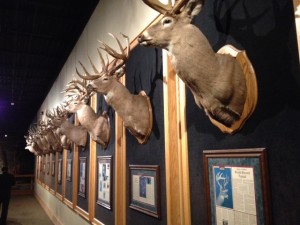
While I felt out of place at Cabela’s, being a white male I should not have. I noticed while walking around that most of the taxidermy animals around Cabela’s had plaques below them showing who had shot the animal (As seen in the above photo). On every single one of these plaques was a white male. White men seemed to be the clientel the store was targeting, and they were the people I most saw in the store. The store contained signs stating, “I let her go shopping so I can go hunting” and other products suggesting it was catering to an audience of white men.
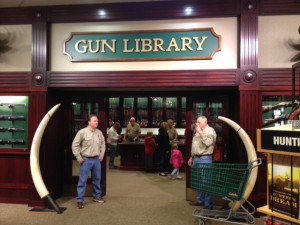
I did not feel at home in Cabela’s, but I did learn a lot there. Before Cabela’s, I had actually never even held a gun, and it was really interesting to experience for the first time. Walking around with Joey through the fishing section he was able to explain to me a lot of equipment I had never heard of, being an avid fisherman. Overall, I thought, while cold, it was a really informative day, and seeing such conflicting views of nature in such a short time span really made it easy to spot all of the differences.

